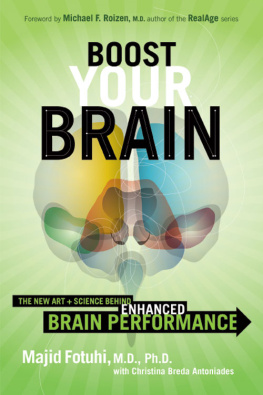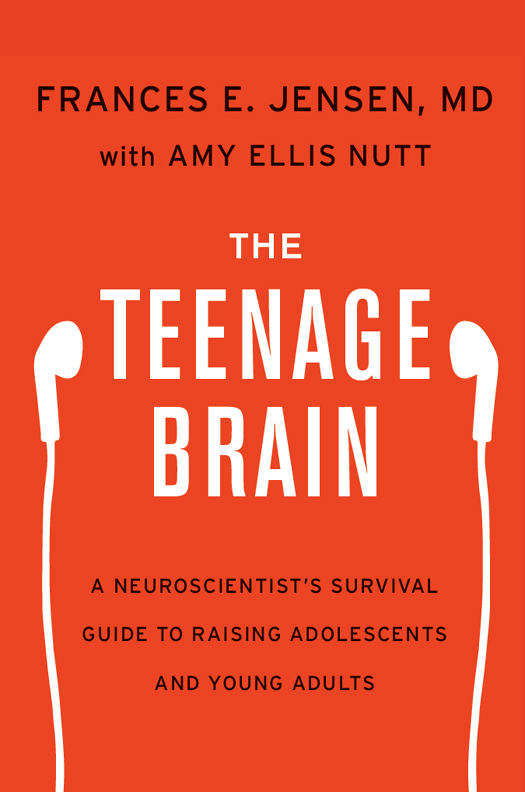Frances E. Jensen - The Teenage Brain: A Neuroscientists Survival Guide to Raising Adolescents and Young Adults
Here you can read online Frances E. Jensen - The Teenage Brain: A Neuroscientists Survival Guide to Raising Adolescents and Young Adults full text of the book (entire story) in english for free. Download pdf and epub, get meaning, cover and reviews about this ebook. year: 2015, publisher: Harper, genre: Religion. Description of the work, (preface) as well as reviews are available. Best literature library LitArk.com created for fans of good reading and offers a wide selection of genres:
Romance novel
Science fiction
Adventure
Detective
Science
History
Home and family
Prose
Art
Politics
Computer
Non-fiction
Religion
Business
Children
Humor
Choose a favorite category and find really read worthwhile books. Enjoy immersion in the world of imagination, feel the emotions of the characters or learn something new for yourself, make an fascinating discovery.
- Book:The Teenage Brain: A Neuroscientists Survival Guide to Raising Adolescents and Young Adults
- Author:
- Publisher:Harper
- Genre:
- Year:2015
- Rating:4 / 5
- Favourites:Add to favourites
- Your mark:
The Teenage Brain: A Neuroscientists Survival Guide to Raising Adolescents and Young Adults: summary, description and annotation
We offer to read an annotation, description, summary or preface (depends on what the author of the book "The Teenage Brain: A Neuroscientists Survival Guide to Raising Adolescents and Young Adults" wrote himself). If you haven't found the necessary information about the book — write in the comments, we will try to find it.
Drawing on her research knowledge and clinical experience, internationally respected neurologistand mother of two boysFrances E. Jensen, M.D., offers a revolutionary look at the science of the adolescent brain, providing remarkable insights that translate into practical advice for both parents and teenagers.
Driven by the assumption that brain growth was pretty much complete by the time a child began kindergarten, scientists believed for years that the adolescent brain was essentially an adult oneonly with fewer miles on it. Over the last decade, however, the scientific community has learned that the teen years encompass vitally important stages of brain development.
Motivated by her personal experience of parenting two teenage boys, renowned neurologist Dr. Frances E. Jensen gathers what weve discovered about adolescent brain functioning, wiring, and capacity and, in this groundbreaking, accessible book, explains how these eye-opening findings not only dispel commonly held myths about the teenage years, but also yield practical suggestions that will help adults and teenagers negotiate the mysterious world of adolescent neurobiology.
Interweaving clear summary and analysis of research data with anecdotes drawn from her years as a parent, clinician, and public speaker, Dr. Jensen explores adolescent brain functioning and development in the contexts of learning and multitasking, stress and memory, sleep, addiction, and decision-making.
Rigorous yet accessible, warm yet direct, The Teenage Brain sheds new light on the brainsand behaviorsof adolescents and young adults, and analyzes this knowledge to share specific ways in which parents, educators, and even the legal system can help them navigate their way more smoothly into adulthood.
Frances E. Jensen: author's other books
Who wrote The Teenage Brain: A Neuroscientists Survival Guide to Raising Adolescents and Young Adults? Find out the surname, the name of the author of the book and a list of all author's works by series.











